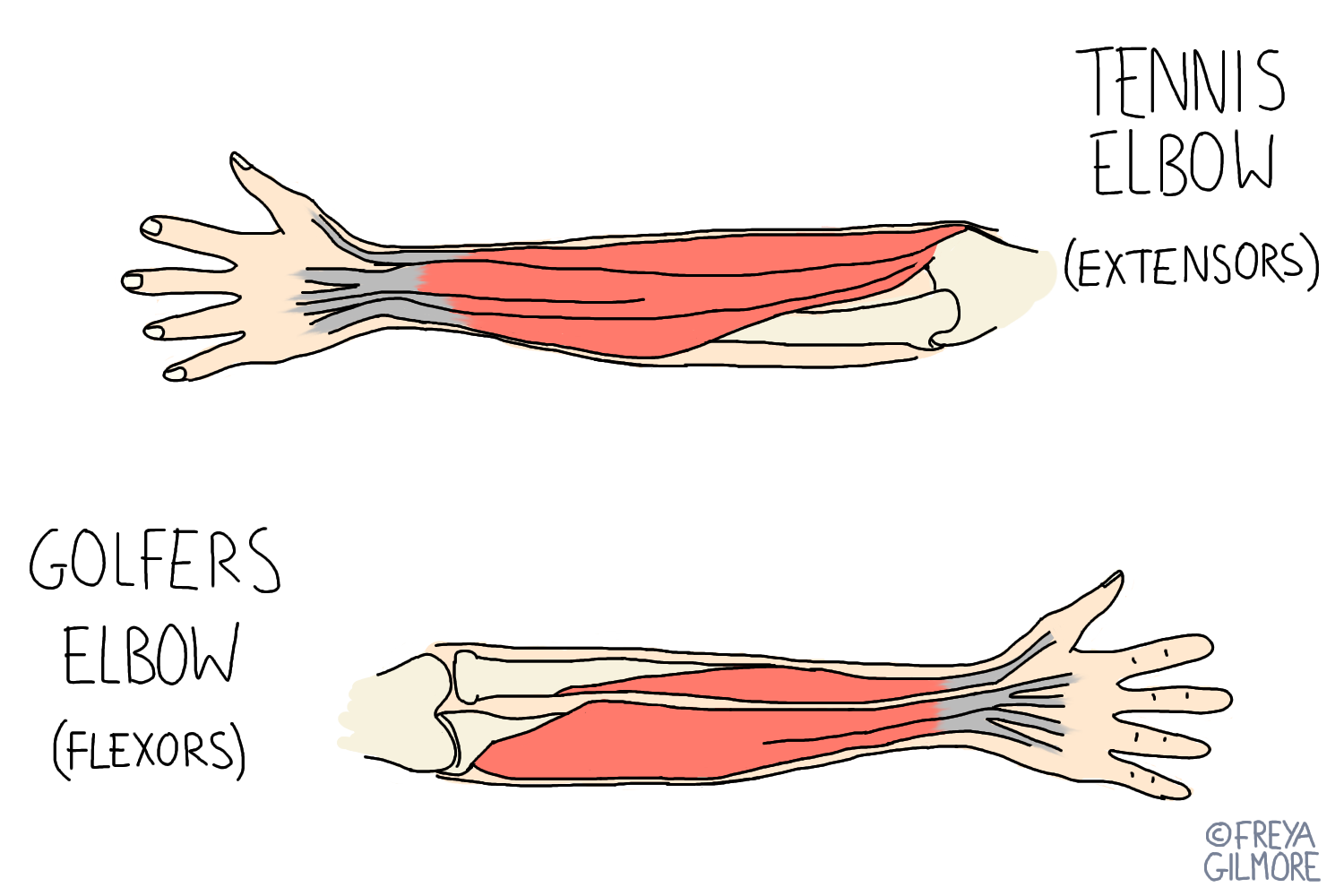05 August 2020
Tennis Elbow

You don’t have to play tennis to develop tennis elbow- in fact unless you play a lot of backhand shots, tennis probably won’t cause it at all. The scientific name is lateral epicondylitis, which means inflammation of the epicondyle. This is the bone of the elbow where the muscles in question attach.
Early stages of Tennis Elbow
Epicondylitis can start out as a simple muscle strain from too much wrist extension. Even something as innocent as carrying heavy shopping bags could cause it if you were to do enough of it suddenly. As a general rule, starting a new activity and doing a lot of it is an easy way to develop aches and pains. This risk can be reduced by warming up before, and stretching after exercise. However if you’re pushing the muscles to the limit every day, they will start to complain!
Inflammation
If this strain goes on for long enough, the body can react with inflammation, developing true tennis elbow. Signs of this stage can include:
- increased tenderness around the wrist extensors and elbow
- general increased pain on wrist extension
- possibly hot, red, or puffy skin at the same area
You may find yourself reaching for the ice for relief at this point. It is important not to over-ice an injury. Avoid putting a frozen compress directly on the skin, and remember that your aim is not to numb the area. Often a numbed injury will become more painful than it was originally once the ice is removed.
To minimise the risk of over-icing, you can try a cool wet flannel or a bag of frozen peas wrapped in a tea towel. Even with these less direct methods, ten minutes of cooling per hour is often enough to provide some relief without aggravating symptoms. Your osteopath can advise you further at your appointment.
Golfer’s elbow
As with tennis elbow, golfer’s elbow doesn’t have to start with golf. It affects the opposite muscles, so it’s medial epicondylitis. Prolonged, repeated wrist flexion will cause the same symptoms as above, just on the other side of the forearm and elbow.
Apart from the slightly different affected area, this is essentially the same condition. Similar treatments and advice will be provided by your osteopath for both tennis and golfer’s elbow.
Managing tennis elbow
Catching tennis elbow before it fully develops gives you the best prognosis, but if your epicondylitis is fully developed, we can still help. During treatment, your osteopath will work to improve mechanics throughout the arm and into the upper back if appropriate. You may be given exercises and advice to reduce pain and swelling, and your osteopath can work with you to get to the root cause. If this is a sports injury, there may be ways to alter the way you play to take the strain off the forearm, such as changing the grip on your racket or incorporating a new stretching routine.
At Ilminster Osteopathy we specialise in treating disorders of the neck, shoulder, and arm. Book your appointment today.
Learn more
At Ilminster Osteopathy my goal is to help people achieve their goals whatever they may be. Watch our video to find out more.


